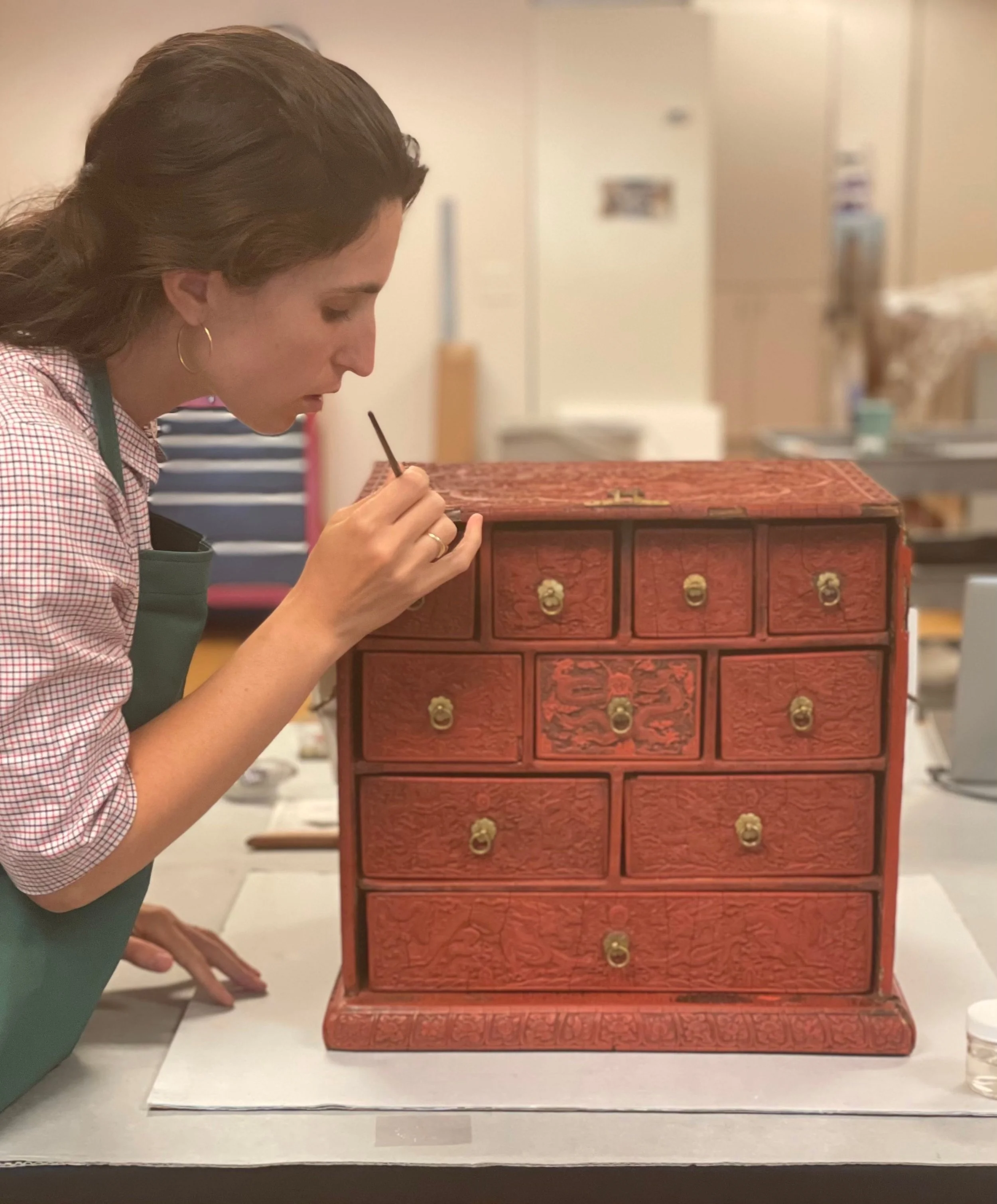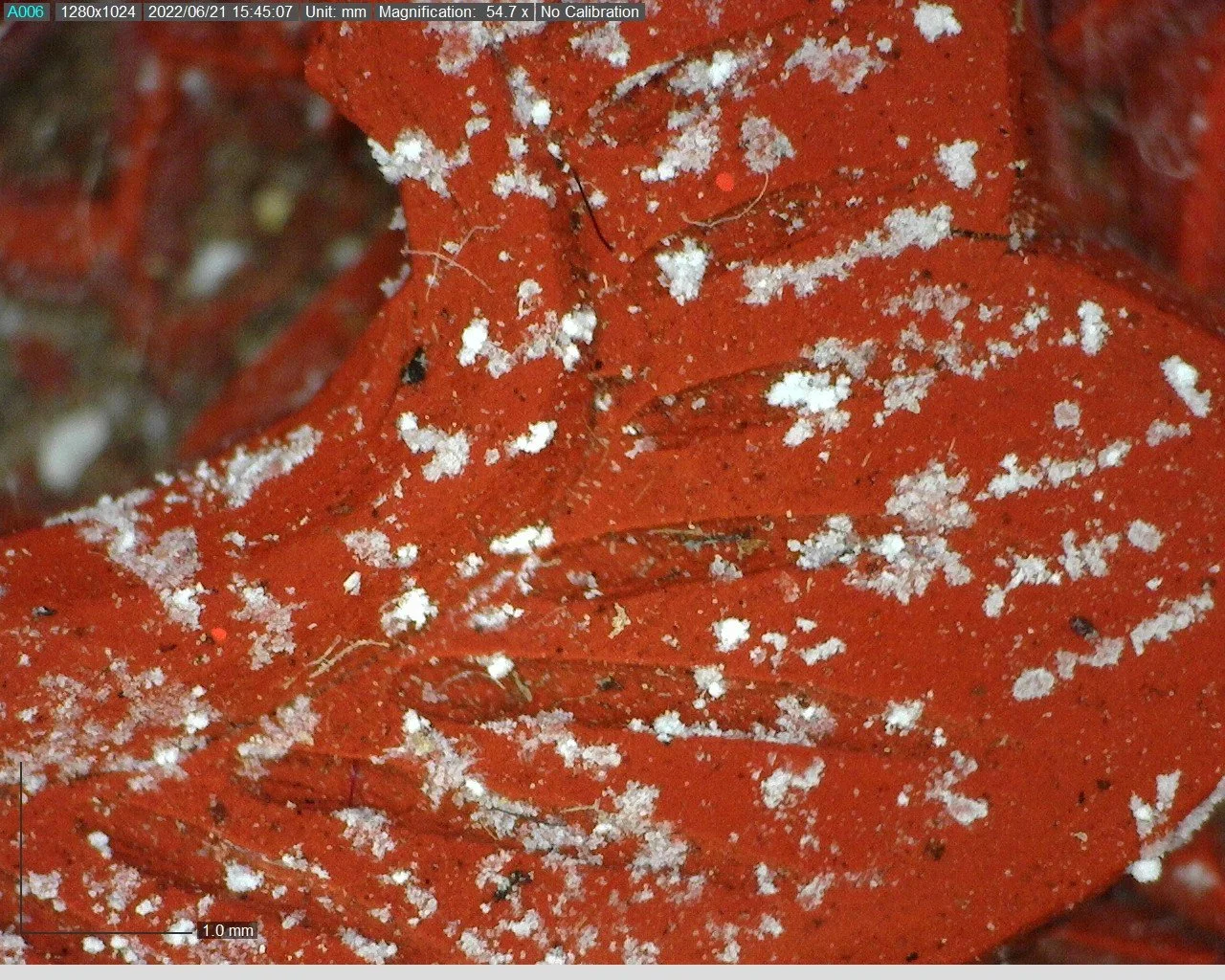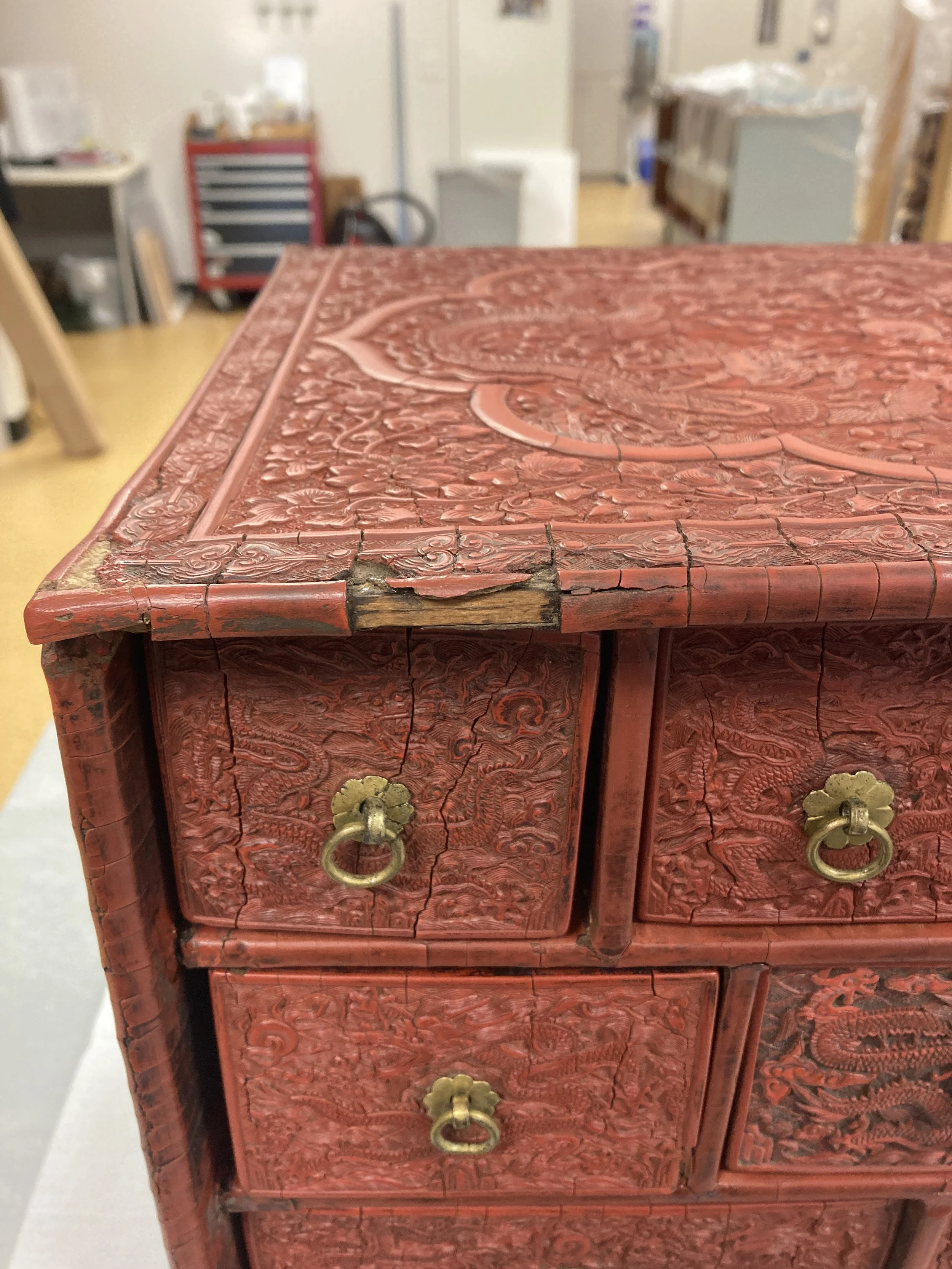
Cleveland Museum of Art
Summer 2022
Under the the supervision of Beth Edelstein and Colleen Snyder I completed an 8-week summer internship in the objects conservation lab at the Cleveland Museum of Art (CMA). In addition to the project highlighted below, I was able to participate in a gilding “bootcamp” hosted by David Puirek, frame conservation technician, and assist in an anoxia treatment of an infested frame led by Laura Gaylord Resch, preventive conservator. Other objects I worked include a treatment of a Roman mosaic floor segment which required the removal of large identification numbers that were painted upon the tesserae as well a treatment of an ancient Mimbres ceramic that had visible yellowed adhesive and discolored inpainting.
Lacquer Chest
This ti-hong (Chinese carved red lacquer) chest is attributed to the Wanli period in the Ming Dynasty as indicated by the painted on characters on the underside of this chest. The red color of the urushi lacquer is likely attributed to the inclusion of cinnabar (mercury sulphide). The inside of the drawers and interior walls of the chest are black lacquer, which was historically pigmented with carbon black.
Coming into the conservation lab at the CMA, there were two primary condition concerns with this chest. First there was a white bloom visible on a detached front panel and along sections of its bottom rail. The second issue are the visible losses primarily along the top edge of the chest.
Detail of the detached front panel. Dino-Lite digital microscope image of the white bloom.
A sample of the white bloom was removed from the front detached section and was analyzed using Attenuated Total Reflection - Fourier Transform Infrared (ATR-FTIR) Spectroscopy. The spectral results suggest that the bloom is a combination of a stearic acid and a microcrystalline wax (reference spectra Cosmoloid 80h). The detached front is not consistent with the main body of the chest and the bottom rail appears to be a restoration. One theory for the cause of the bloom is that a dried had been added to the lacquer and the microcrystalline wax had been added as a coating but then formed this bloom when the drier leached. The bloom was removed with a brush and a quill. The tacky white bloom could then be vacuumed up with a Nilfisk.
Many fill and adhesive combinations were tested in order to address the losses in the red lacquer. Concerns around lacquer’s sensitivity to moisture and heat The chosen method was a melted blend of carnauba, microcrystalline and paraffin wax. When melted this blend of waxes was easy to pigment with pure pigments which could then be casted into an aluminum foil mold. Once cooled the wax could then be carved to the specific area of loss and rubbed the surface with powdered sandstone to match the surrounded lacquer.
Japanese tissue was then cut to the shape of the loss and then a 2.5% methyl cellulose solution in water was applied to the outward facing side. This will allow for increased success in removal of this barrier layer. The methyl cellulose solution was then applied to the back of the prepared wax fill and held in place on top of the Japanese tissue barrier.
At the end of every summer, interns and fellows are encouraged to present their experiences at the CMA to the curatorial and conservation departments. I decided the best way for me to express myself was in the form of this poem which I read aloud with images of the lacquer chest behind me.






